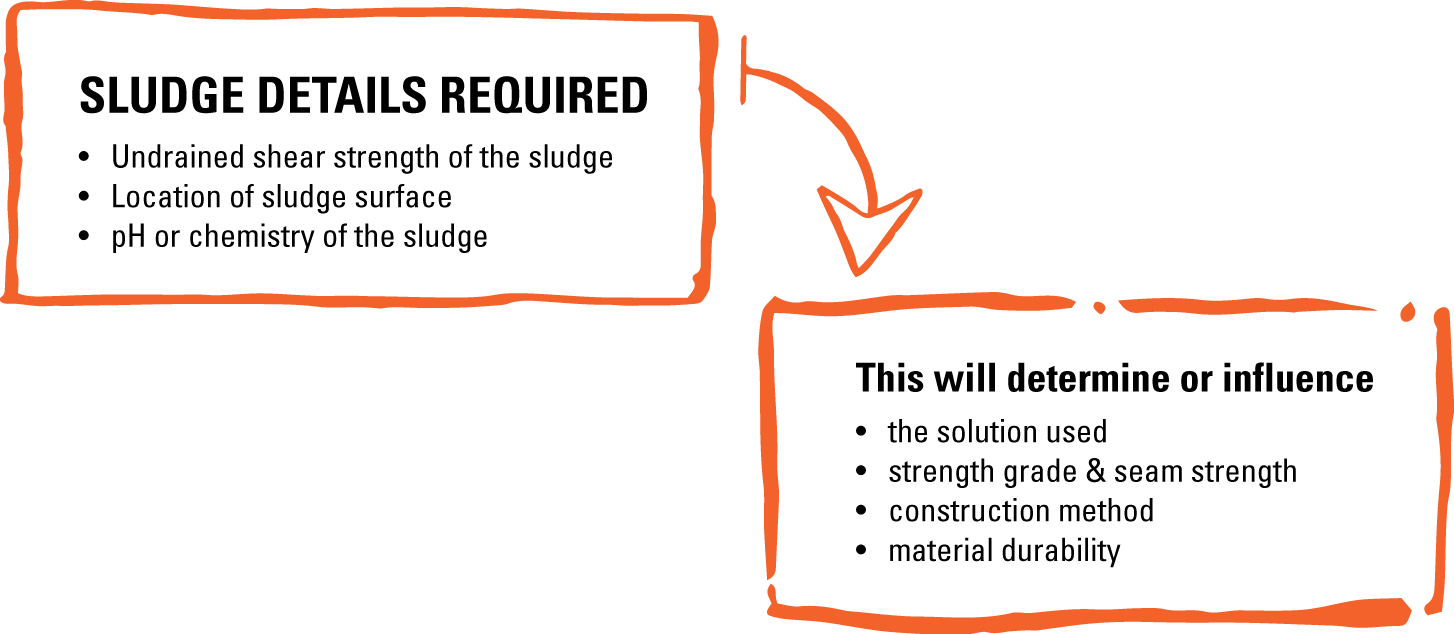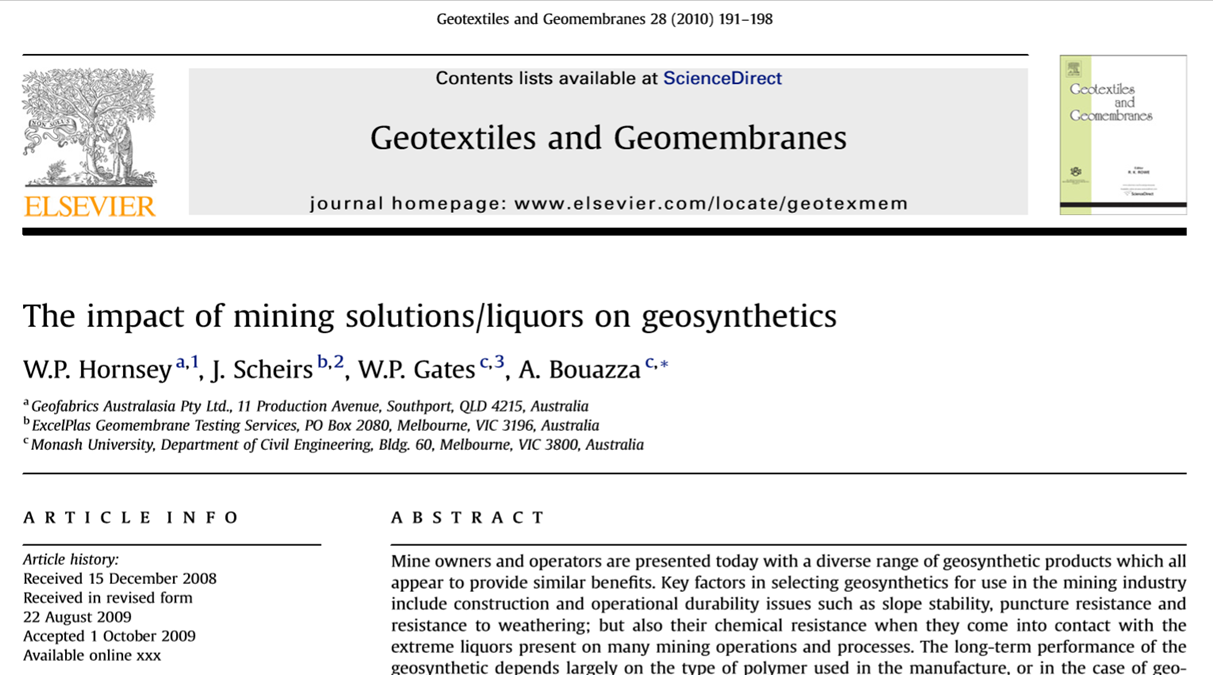Blog Bite 1: Sludge Pond Closure Using Geotextile Reinforcement
By Brendan Swifte

Welcome to our blog space where we share our insights and experiences in civil engineering and geosynthetics. We feature bite-sized articles for quick and easy consumption
Sludge lagoons are used by many industries to handle their process waste, with the mining sector requiring large sludge lagoons. When closure of these lagoons is required, they can present challenges if the sludge has low bearing capacity.
A proven solution for capping sludge lagoons is the use of multi-functional geotextile reinforcement layer across the sludge pond, followed by placement of fill material.
We explore the engineering that drives the use of this solution via six simple steps, over 3 bite-sized pieces.
Let’s have our first bite where we consider the mine sludge details and available construction resources – the first step towards a TenCate reinforcement geotextile solution.
Bite #1. SLUDGE POND CLOSURE USING GEOTEXTILE REINFORCEMENT
Many industries (particularly the mining sector) use storage ponds to contain sludge or sediments. As these ponds become full, a decision is required whether to extend their lives or to close and reclaim them.
Closing and reclaiming sludge ponds can be difficult due to the low shear strength of the sludge, which may continue for many years.
One proven technique is to use a multi-functional geotextile reinforcement layer across the sludge pond surface prior to the placement of fill material.
The geotextile reinforcement layer improves the effective bearing capacity of the sludge, prevents fill loss into the sludge and requires no pre-treatment of the contained sludge.

The first two steps will determine the design inputs for the engineering.
Step 1: Sludge Details
An important detail to know is how strong the sludge is. The undrained shear strength will influence the solution. Even if we think the crust is stiff, it may not be enough to handle the construction loads.
We want to know the undrained shear strength of the sludge, preferably at various locations across the pond surface and through the depth profile. The more detail known, the better the solution. A high-quality geotechnical report at the start yields benefits later.
In-situ vane shear testing will provide the undrained shear strength. A very low undrained shear strength will tend towards a geosynthetic reinforcement layer solution.

We also wish to know the location of the sludge (ie. above water or below water) as this influences the construction process. Where the sludge is beneath a water layer, specific techniques can be used to install the reinforcement layer (eg. pulling geotextile panels across, placement by barge etc).
Knowing the pH of the sludge will confirm the compatibility of the sludge with the polymer of the geosynthetic reinforcement layer. This is generally only a concern for sludges with extreme pH.
Step 2: Available Site Materials & Resources
The applied construction and fill material loads are an input into the design process.
Knowing the details of the cover material and how it will be placed allows us to determine the imposed loads, as well as any installation impact on the geotextile reinforcement layers. Woven geotextiles accommodate a wide range of fill materials.

For remote sites, the construction equipment available may be limited.
Some sites will be able to place the cover material without having machinery or people traversing the sludge, however this is not always possible (particularly for large ponds in remote areas, such as mine sites).
Carry on to our second bite-sized piece where we look at the engineering design of a TenCate geotextile reinforced capping solution.
References:
- Geotextile Reinforced Sludge Pond Closures brochure
- Reinforced Mine Tailings Pond Closure, Huelva, Spain case study
- Capping/Closure of sludge ponds technical paper




